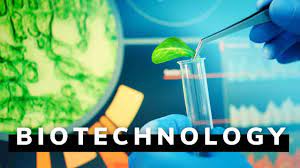Biotechnology is a field of science and technology that involves the use of living organisms, biological systems, or their components to develop or create useful products, processes, or applications. It combines biology, chemistry, genetics, and other disciplines to manipulate biological systems for practical purposes.
The main branches of biotechnology include:
- Medical Biotechnology: This branch focuses on using biotechnology to develop medical treatments, therapies, and diagnostic tools. It includes areas such as genetic engineering, gene therapy, pharmaceutical development, personalized medicine, and the production of biopharmaceuticals.
- Agricultural Biotechnology: Agricultural biotechnology applies biotechnology techniques to improve crop plants, livestock, and agricultural processes. It involves genetic modification of plants for enhanced yield, resistance to pests or diseases, improved nutritional content, and environmental sustainability. It also includes the development of genetically modified organisms (GMOs) and biofuels.
- Industrial Biotechnology: Industrial biotechnology utilizes biological systems or components for the production of chemicals, materials, and energy. It involves the use of microorganisms, enzymes, or biological processes to produce biofuels, bioplastics, enzymes, bio-based chemicals, and other industrial products. It aims to provide environmentally friendly and sustainable alternatives to traditional industrial processes.
- Environmental Biotechnology: This branch focuses on utilizing biotechnology to address environmental challenges. It involves the use of biological processes to treat wastewater, remediate polluted sites, monitor and control pollution, and develop biofuels or bio-based materials that reduce environmental impact. Environmental biotechnology contributes to the conservation and restoration of ecosystems and the mitigation of climate change.
- Marine Biotechnology: Marine biotechnology involves the application of biotechnology techniques to marine organisms and systems. It includes the study and utilization of marine organisms for drug discovery, aquaculture, bioremediation, and the development of sustainable products from marine resources.
- Bioinformatics: Bioinformatics is an interdisciplinary field that combines biology, computer science, and statistics. It involves the use of computational tools and algorithms to analyze biological data, such as DNA sequences, protein structures, and gene expression patterns. Bioinformatics plays a crucial role in genomics, proteomics, drug discovery, and personalized medicine.
These branches of biotechnology often overlap and intersect, and advancements in one branch can have implications across multiple areas. Biotechnology has a wide range of applications and continues to play a significant role in various sectors, including healthcare, agriculture, industry, and the environment.
SHARE
